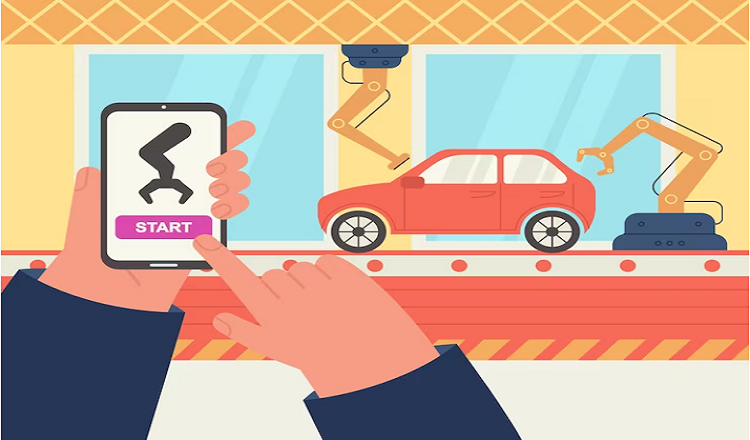The use of devices in the automotive industry has come a long way since the early days of the automobile. Gone are the days of simple mechanical systems and basic electrical components. Today, we’re seeing the rise of sophisticated devices that are revolutionizing the transportation industry as we know it.
In the automotive industry, devices refer to any electronic component or system that is used to control or monitor the vehicle’s performance. This can include sensors, cameras, radar, and other advanced technologies. These devices work together to make driving safer, more efficient, and more convenient than ever before.
The potential of these devices to revolutionize transportation is enormous. With the rise of autonomous vehicles, we’re seeing the beginnings of a transportation system that could drastically reduce accidents and improve accessibility. Additionally, the use of vehicle-to-everything communication (V2X) technology is enabling cars to communicate with one another and with other infrastructure, making it possible to optimize traffic flow and reduce congestion. The importance of this topic cannot be overstated, as the automotive industry continues to evolve and embrace new technologies. So buckle up and get ready for a wild ride as we explore the fascinating world of devices in the automotive industry and their potential to change the way we get around
Devices in the automotive industry
Devices in the automotive industry are an essential part of modern vehicles, providing a wide range of benefits to drivers and passengers alike. From safety features such as anti-lock brakes and airbags to convenience features like GPS and entertainment systems, devices play a crucial role in enhancing the driving experience. Sensors are used to detect potential hazards and automatically apply brakes to avoid accidents. Cameras assist drivers in parking and changing lanes, while infotainment systems provide entertainment and keep drivers connected. Additionally, devices are helping to improve fuel efficiency and reduce emissions, helping to create a more sustainable future. As technology continues to advance, we can expect to see even more innovative devices in the automotive industry that will further revolutionize transportation.
IoT in the automotive industry
The Internet of Things (IoT) has become an increasingly important part of the automotive industry, transforming the way we drive and interact with our vehicles. In the automotive industry, IoT refers to the ability of vehicles to connect to the internet and other devices, allowing for the sharing of data and the ability to control various features remotely. IoT is used in the automotive industry to improve safety, efficiency, and convenience for drivers and passengers.
Examples of IoT devices used in the automotive industry include GPS systems that provide real-time navigation information and traffic updates, as well as vehicle-to-vehicle communication technology that allows cars to communicate with one another to avoid accidents and optimize traffic flow. Additionally, IoT-enabled devices such as remote start and unlock systems and tire pressure monitoring systems make it easier and more convenient to operate vehicles. As IoT technology continues to evolve, we can expect to see even more innovative applications in the automotive industry that will further enhance the driving experience.
Autonomous vehicles
Autonomous vehicles, also known as self-driving cars, are vehicles that are capable of operating without the need for human intervention. These vehicles use a combination of devices, such as sensors, cameras, and radar, to perceive their environment and make decisions based on that information. Devices are a crucial part of autonomous vehicles, allowing them to navigate roads, detect obstacles, and avoid collisions.
One of the main benefits of autonomous vehicles is the potential to significantly reduce accidents on the road. With devices providing constant awareness of the vehicle’s surroundings and the ability to react to potential hazards quickly, the risk of accidents caused by human error can be greatly reduced. Additionally, autonomous vehicles have the potential to increase accessibility for individuals who are unable to drive, such as the elderly and those with disabilities. As technology continues to advance and more research is conducted, we can expect to see even more benefits and potential applications of autonomous vehicles in the near future.
Vehicle-to-everything communication (V2X)A
Vehicle-to-everything communication (V2X) is a type of communication technology that enables vehicles to exchange information with other vehicles and infrastructure around them. V2X communication works by using wireless signals to transmit data between vehicles and the surrounding environment, such as traffic signals and road signs. This data can include information about the vehicle’s speed, direction, and location, as well as potential hazards or road conditions.
One of the main benefits of V2X communication is the potential to increase safety on the road. With V2X-enabled devices, vehicles can receive real-time information about potential hazards, allowing them to take proactive measures to avoid accidents. Additionally, V2X communication can help to reduce traffic congestion by optimizing traffic flow and providing drivers with real-time information about the best routes to take. As more vehicles and infrastructure become equipped with V2X technology, we can expect to see even more benefits and potential applications of this innovative communication technology in the automotive industry.
The future of devices in the automotive industry
As technology continues to advance, the use of devices in the automotive industry is expected to continue to grow, leading to a number of exciting developments and innovations in the years to come. In the future, we can expect to see even more advanced safety features, such as fully autonomous vehicles and advanced driver assistance systems, as well as further advancements in fuel efficiency and reduced emissions.
Potential future developments in the use of devices in the automotive industry include the increased use of artificial intelligence and machine learning to optimize vehicle performance and reduce energy consumption, as well as the development of new forms of connectivity, such as 5G networks, that will enable even faster and more reliable communication between vehicles and infrastructure. Additionally, we can expect to see even more integration of IoT and V2X communication technologies, allowing for greater collaboration and data-sharing between vehicles and the surrounding environment. Overall, the future of devices in the automotive industry is sure to be full of exciting developments and advancements that will revolutionize transportation as we know it.
Conclusion
As technology continues to advance, the use of devices in the automotive industry is expected to continue to grow, leading to a number of exciting developments and innovations in the years to come. In the future, we can expect to see even more advanced safety features, such as fully autonomous vehicles and advanced driver assistance systems, as well as further advancements in fuel efficiency and reduced emissions.
Potential future developments in the use of devices in the automotive industry include the increased use of artificial intelligence and machine learning to optimize vehicle performance and reduce energy consumption, as well as the development of new forms of connectivity, such as 5G networks, that will enable even faster and more reliable communication between vehicles and infrastructure. Additionally, we can expect to see even more integration of IoT and V2X communication technologies, allowing for greater collaboration and data-sharing between vehicles and the surrounding environment. Overall, the future of devices in the automotive industry is sure to be full of exciting developments and advancements that will revolutionize transportation as we know it.




